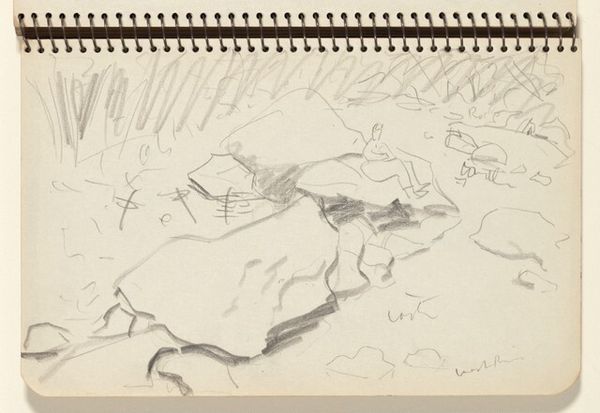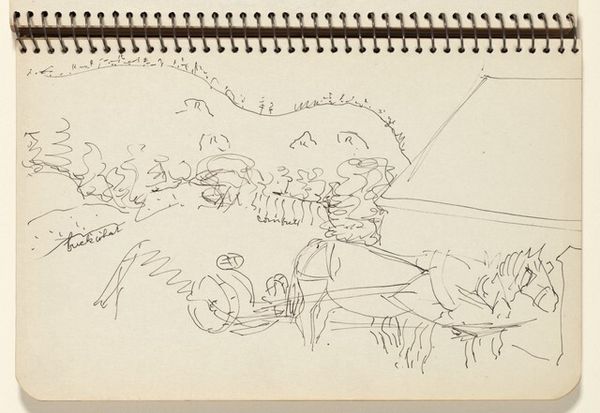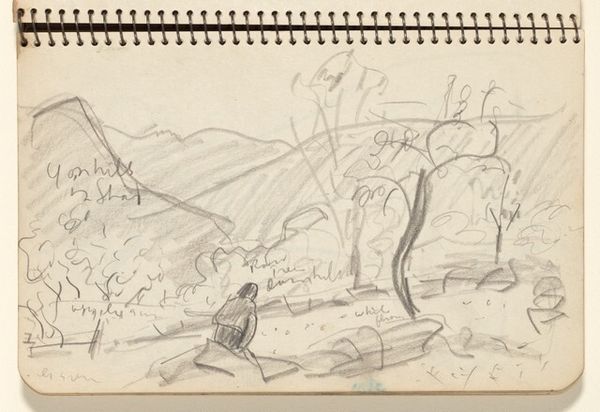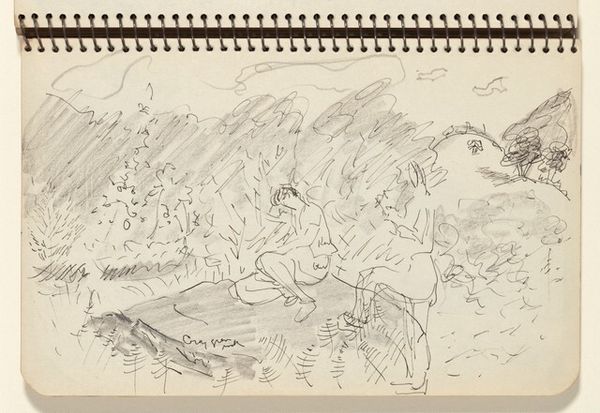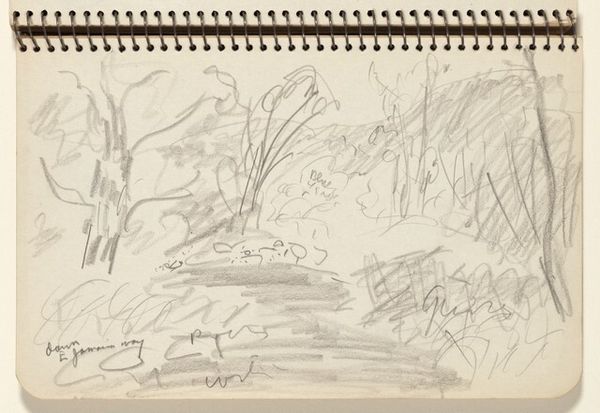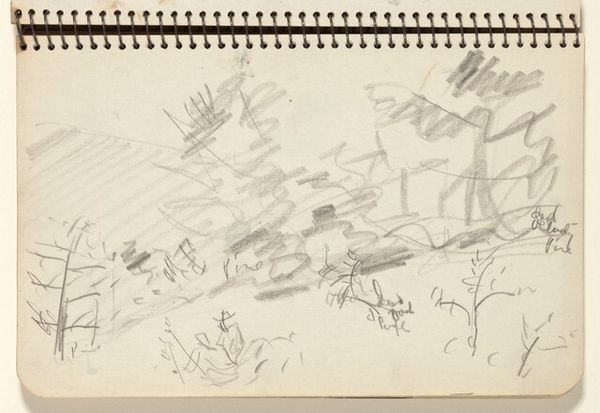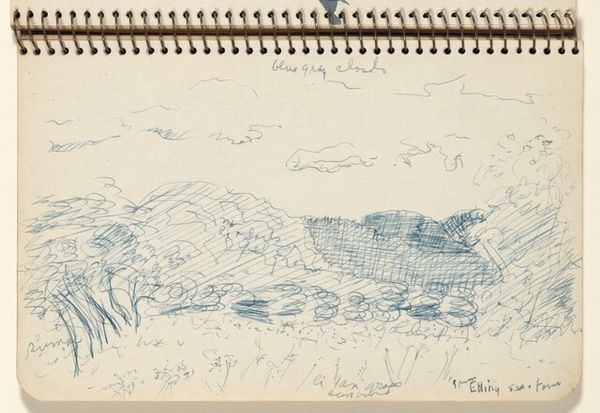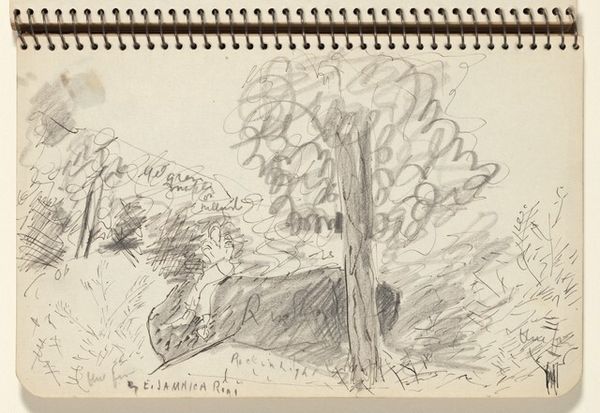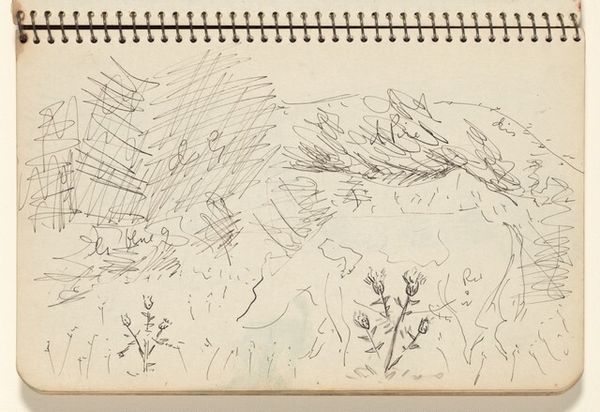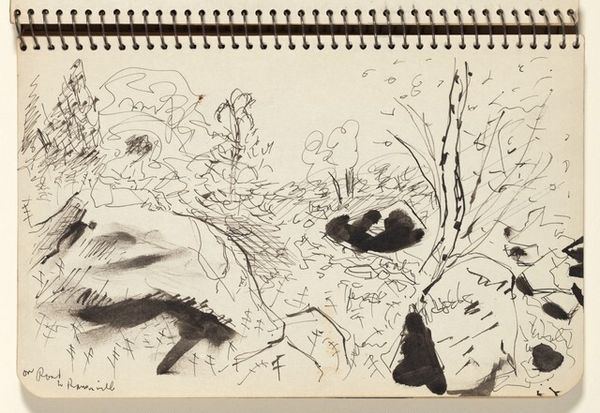
Dimensions: overall: 12.8 x 20 cm (5 1/16 x 7 7/8 in.)
Copyright: National Gallery of Art: CC0 1.0
Editor: So, this is Milton Avery’s "Trees Near a Fence," a pencil drawing from 1943. It looks like a quick sketch in a notebook. There's a lovely, almost dreamy quality to the seemingly simple lines. How do you read the imagery in this seemingly ephemeral work? Curator: This unassuming drawing invites us into Avery's world through its sketched impressions, the symbolic landscape. Notice how the trees are not just trees; their verticality suggests aspiration, a reaching for something beyond. Even the fence acts as more than just a barrier. It also functions as a marker of boundary, creating a dialogue between what is enclosed and what remains beyond our grasp. What feelings does this composition evoke for you? Editor: I get a sense of quiet contemplation, but also some melancholy. Like, something’s being kept out, or someone’s being kept in, by the fence? Curator: Precisely! Avery masterfully balances that visual opposition through this symbolic composition, inviting reflections on containment versus freedom. The simplicity of the lines only amplifies this core emotional complexity and makes it even more immediate. Do you notice anything else in the use of symbolic representation here? Editor: The quick strokes... they suggest transience, a fleeting moment captured. I guess I never considered how loaded a simple line could be. Curator: Absolutely. In its delicate way, this simple composition reflects on themes that connect to us all and endure beyond generations: freedom, limit, desire, and reflection. Editor: This really changes how I'll approach sketches going forward! Curator: I hope that seeing the landscape’s depth here encourages visitors to consider this sketch as part of an ongoing, continuous and meaningful artistic legacy.
Comments
No comments
Be the first to comment and join the conversation on the ultimate creative platform.

